What Are the Advantages of Cross Roller Slewing Bearings?
Cross roller slewing bearings are essential components in many industrial and mechanical applications, offering unique advantages over other types of bearings. These specialized bearings consist of cylindrical rollers arranged in a crossed pattern between two ring raceways. This design allows them to handle both radial and axial loads simultaneously, making them ideal for applications requiring high precision and stability under complex loading conditions. In this blog post, we'll explore the key advantages of cross roller slewing bearings and why they are crucial in various industries.

How do cross roller slewing bearings differ from ball bearings?
Cross roller slewing bearings and ball bearings are both crucial components in many mechanical systems, but they have distinct differences in design, function, and performance. Understanding these differences is essential for engineers and designers to choose the right bearing for their specific application.
The most obvious difference between cross roller slewing bearings and ball bearings lies in their rolling elements. Cross roller bearings use cylindrical rollers arranged in a perpendicular pattern, while ball bearings utilize spherical balls. This fundamental design difference leads to several key distinctions in their performance characteristics:
1. Load capacity: Cross roller slewing bearings generally have a higher load capacity compared to ball bearings of similar size. The cylindrical rollers provide a larger contact area with the raceways, allowing them to distribute loads more effectively. This increased load capacity makes cross roller bearings particularly suitable for applications involving heavy loads or where space is limited.
2. Moment load handling: The crossed arrangement of rollers in cross roller slewing bearings enables them to handle moment loads (tilting forces) more effectively than ball bearings. This capability is crucial in applications where the bearing must maintain stability and precision under complex loading conditions, such as in robotic arms or machine tool turntables.
3. Rigidity and precision: Cross roller slewing bearings generally offer higher rigidity and precision compared to ball bearings. The linear contact between the rollers and raceways provides better control over radial and axial runout, resulting in smoother rotation and more accurate positioning. This makes them ideal for applications requiring high precision, such as semiconductor manufacturing equipment or medical imaging devices.
4. Friction characteristics: Ball bearings typically have lower friction than cross roller bearings, especially at high speeds. This is due to the point contact between the balls and raceways, which results in less rolling resistance. However, cross roller bearings can still provide smooth operation at lower to moderate speeds, and their higher load capacity often outweighs the slightly increased friction in many applications.
5. Speed limitations: Ball bearings generally have higher speed capabilities compared to cross roller slewing bearings. The spherical design of ball bearings allows for easier lubrication and heat dissipation at high speeds. Cross roller bearings, while capable of moderate speeds, are more commonly used in applications where precision and load capacity are prioritized over high-speed operation.
Understanding these differences is crucial for engineers and designers when selecting the appropriate bearing for their application. While ball bearings remain a popular and versatile choice for many applications, cross roller slewing bearings offer distinct advantages in scenarios where high precision, high load capacity, and complex load handling are paramount.
What are the key applications of cross roller slewing bearings?
Cross roller slewing bearings find extensive use across various industries due to their unique combination of high load capacity, precision, and ability to handle complex loading conditions. Let's explore some of the key applications where these bearings play a crucial role:
1. Robotics and automation:
In the rapidly evolving field of robotics, cross roller slewing bearings are essential components in robotic arms and joints. They provide the necessary precision and stability for accurate positioning and movement, even under varying loads. These bearings enable robots to perform complex tasks in manufacturing, assembly, and material handling with high repeatability and accuracy. For example, in automotive assembly lines, robotic arms equipped with cross roller bearings can precisely position and weld car body parts, ensuring consistent quality and efficiency.
2. Machine tools:
The machine tool industry heavily relies on cross roller slewing bearings for various applications. They are commonly used in rotary tables, indexing tables, and milling heads of CNC machines. The high precision and rigidity of these bearings ensure accurate positioning and smooth rotation, which is critical for achieving tight tolerances in machined parts. For instance, in a 5-axis milling machine, cross roller bearings in the rotary axes enable precise control of the tool orientation, allowing for the creation of complex geometries with high accuracy.
3. Medical equipment:
In the medical field, cross roller slewing bearings play a vital role in imaging equipment such as CT scanners and MRI machines. These bearings support the rotating gantry that houses the X-ray source and detectors in CT scanners, allowing for smooth and precise rotation around the patient. The high load capacity and stability of cross roller bearings ensure that the heavy imaging components remain accurately positioned, contributing to high-quality diagnostic images.
4. Semiconductor manufacturing:
The semiconductor industry demands ultra-high precision in its manufacturing processes. Cross roller slewing bearings are used in wafer handling systems, inspection equipment, and lithography machines. Their ability to provide smooth, precise motion with minimal vibration is crucial for maintaining the extreme accuracy required in chip production. For example, in a wafer stepper used in photolithography, cross roller bearings help position the wafer stage with nanometer-level precision.
5. Renewable energy:
In the wind energy sector, cross roller slewing bearings are used in the yaw and pitch systems of wind turbines. The yaw bearing allows the nacelle to rotate and align with the wind direction, while pitch bearings adjust the angle of the blades to optimize energy capture. These bearings must withstand significant loads and environmental challenges while maintaining precise control over the turbine's orientation and blade pitch.
The versatility of cross roller slewing bearings makes them indispensable in these and many other applications where precision, load capacity, and smooth operation are paramount. As technology advances and new industries emerge, the use of these bearings is likely to expand further, continuing to play a crucial role in enabling complex mechanical systems and precise motion control.
How can cross roller slewing bearings improve machine performance?
Cross roller slewing bearings offer several key advantages that can significantly improve machine performance across various industries. Their unique design and capabilities contribute to enhanced precision, increased efficiency, and overall system reliability. Let's explore in detail how these bearings can elevate machine performance:
1. Enhanced precision and accuracy:
One of the primary ways cross roller slewing bearings improve machine performance is through their exceptional precision and accuracy. The crossed roller arrangement provides a larger contact area between the rollers and raceways compared to ball bearings. This increased contact area results in better load distribution and reduced elastic deformation under load, leading to more precise positioning and smoother rotation.
In applications such as CNC machine tools or robotic arms, this enhanced precision translates to tighter manufacturing tolerances and improved repeatability. For instance, in a precision grinding machine, the use of cross roller bearings in the rotary table can lead to more accurate part geometries and surface finishes, ultimately resulting in higher quality products and reduced scrap rates.
2. Increased load capacity:
Cross roller slewing bearings excel in their ability to handle high loads in both radial and axial directions simultaneously. This high load capacity allows machines to operate more efficiently, especially in applications involving heavy components or significant external forces.
For example, in large industrial robots used for heavy material handling, the use of cross roller bearings in the joints enables the robot to manipulate heavier payloads with greater precision. This increased capacity can lead to improved productivity in manufacturing processes, allowing for the handling of larger parts or the consolidation of multiple operations into a single robotic cell.
3. Improved stability under complex loading:
The unique design of cross roller slewing bearings makes them particularly adept at handling moment loads and maintaining stability under complex loading conditions. This characteristic is crucial in applications where the bearing must resist tilting forces while maintaining precise positioning.
In wind turbines, for instance, cross roller bearings used in the yaw system help maintain the nacelle's alignment with the wind direction, even under varying wind loads and turbulence. This improved stability contributes to more efficient energy generation and reduces wear on other turbine components, potentially extending the overall lifespan of the system.
4. Reduced friction and smoother operation:
While cross roller bearings may have slightly higher friction compared to ball bearings at very high speeds, they generally offer smoother operation and lower friction at low to moderate speeds, especially under heavy loads. The linear contact between the rollers and raceways provides more consistent motion than the point contact found in ball bearings.
This smoother operation is particularly beneficial in applications requiring precise motion control, such as in semiconductor manufacturing equipment. The reduced friction and vibration can lead to more accurate wafer positioning, resulting in higher yield rates and improved chip quality.
5. Compact design and space efficiency:
Cross roller slewing bearings often allow for more compact machine designs due to their ability to handle combined loads in a single bearing assembly. This space efficiency can lead to smaller, lighter machines without compromising on performance or load capacity.
In medical imaging equipment, such as CT scanners, the use of compact cross roller bearings in the rotating gantry allows for designs with larger bore sizes, improving patient comfort while maintaining or even enhancing image quality. The reduced size and weight of the rotating assembly can also lead to faster scan times and reduced power consumption.
6. Enhanced stiffness and rigidity:
The design of cross roller slewing bearings provides high stiffness and rigidity, which is crucial for maintaining precision under varying loads. This increased rigidity helps reduce deflection and vibration in machine components, leading to improved overall performance and potentially extending the lifespan of the machine.
In precision measuring equipment, such as coordinate measuring machines (CMMs), the high stiffness of cross roller bearings contributes to more accurate measurements by minimizing flexing and deflection in the machine's moving parts. This can result in higher confidence in measurement results and the ability to measure tighter tolerances.
By offering these performance enhancements, cross roller slewing bearings contribute significantly to improving overall machine performance across a wide range of industries and applications. Their unique capabilities in handling complex loads, providing high precision, and offering space-efficient designs make them an invaluable component in modern machinery, often playing a crucial role in pushing the boundaries of what's possible in terms of speed, accuracy, and reliability in mechanical systems.
Luoyang Huigong Bearing Technology Co., Ltd. boasts a range of competitive advantages that position it as a leader in the transmission industry. Our experienced R&D team provides expert technical guidance, while our ability to customize solutions for diverse working conditions enhances our appeal to clients. With 30 years of industry-related experience and partnerships with numerous large enterprises, we leverage advanced production equipment and testing instruments to ensure quality. Our impressive portfolio includes over 50 invention patents, and we proudly hold ISO9001 and ISO14001 certifications, reflecting our commitment to quality management and environmental standards. Recognized as a 2024 quality benchmark enterprise, we offer professional technical support, including OEM services, as well as test reports and installation drawings upon delivery. Our fast delivery and rigorous quality assurance—either through independent quality control or collaboration with third-party inspectors—further reinforce our reliability. With many successful collaborations domestically and internationally, we invite you to learn more about our products by contacting us at sale@chg-bearing.com or calling our hotline at +86-0379-65793878.
References
1. SKF Group. (2021). "Slewing bearings." SKF.com.
2. Schaeffler Technologies AG & Co. KG. (2022). "Slewing rings." Schaeffler.com.
3. THK Co., Ltd. (2023). "Cross Roller Rings." THK.com.
4. Rollix. (2022). "Slewing Bearings: Applications and Benefits." Rollix.com.
5. IKO International, Inc. (2021). "Cross Roller Bearings." IKO.co.jp.
6. NSK Ltd. (2023). "Cross Roller Bearings." NSK.com.
YOU MAY LIKE
-
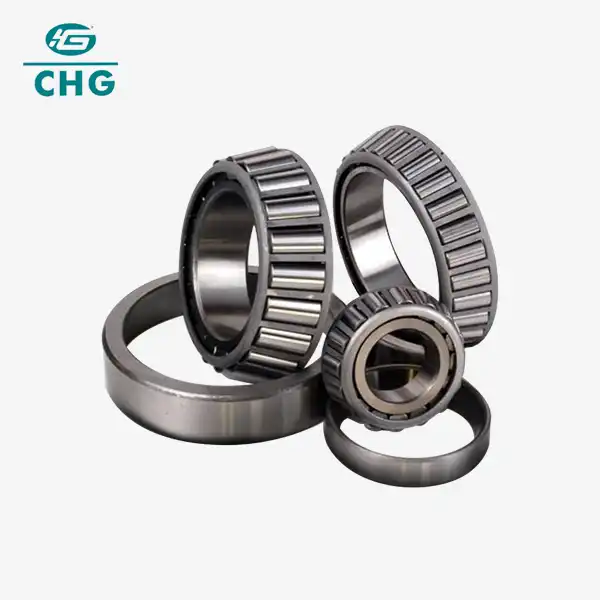 VIEW MORESealed Tapered Roller Bearing
VIEW MORESealed Tapered Roller Bearing -
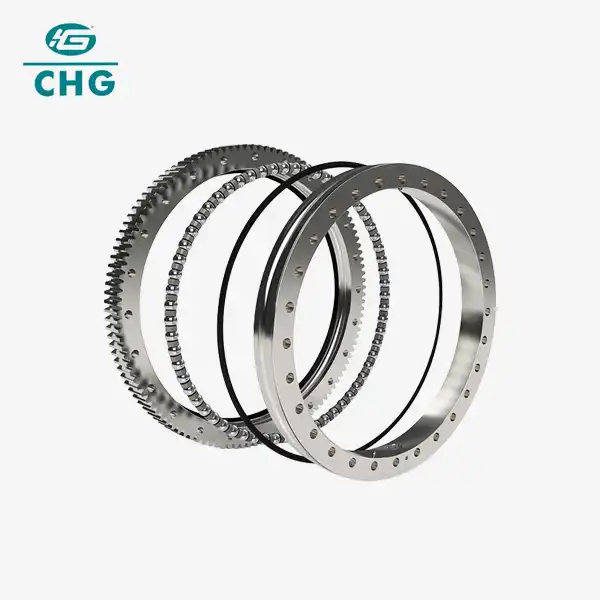 VIEW MORESlewing Ring Bearing With External Gear
VIEW MORESlewing Ring Bearing With External Gear -
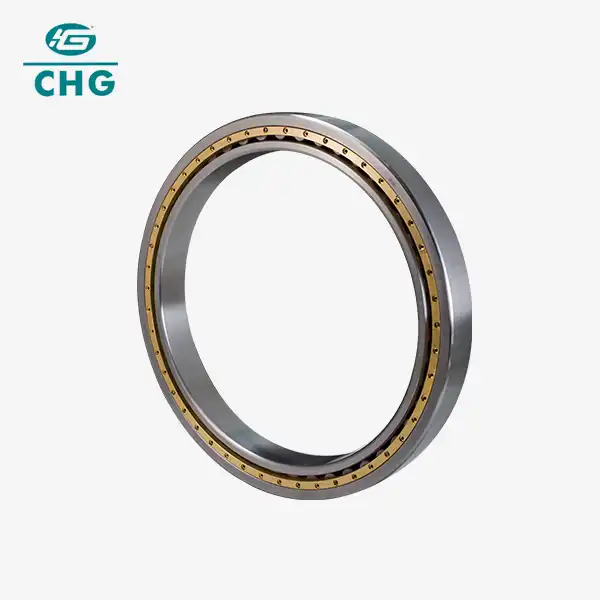 VIEW MORECylindrical Roller Bearing Inch Series
VIEW MORECylindrical Roller Bearing Inch Series -
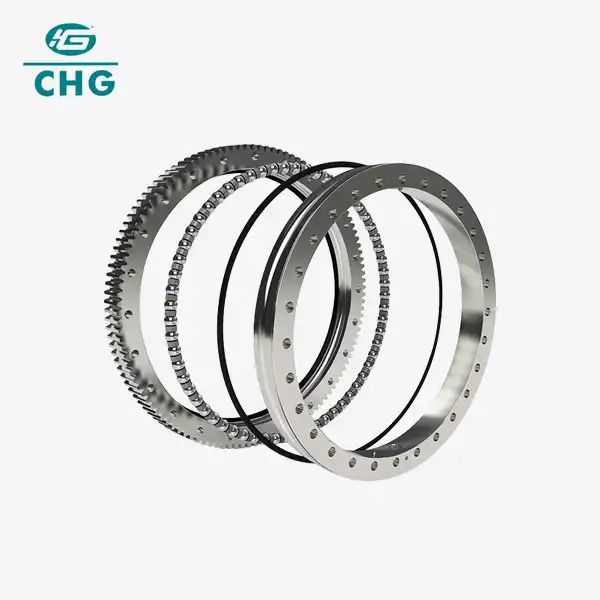 VIEW MORESingle Row Ball Slewing Bearing
VIEW MORESingle Row Ball Slewing Bearing -
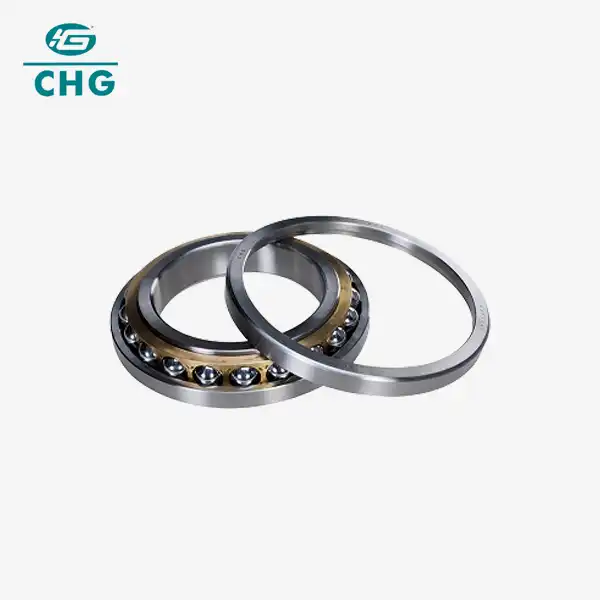 VIEW MORE4 Point Contact Ball Bearing
VIEW MORE4 Point Contact Ball Bearing -
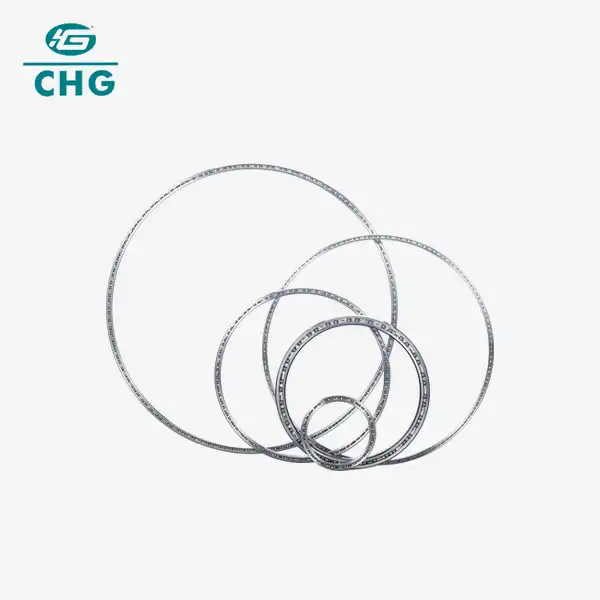 VIEW MOREMetric Thin Section Bearings
VIEW MOREMetric Thin Section Bearings -
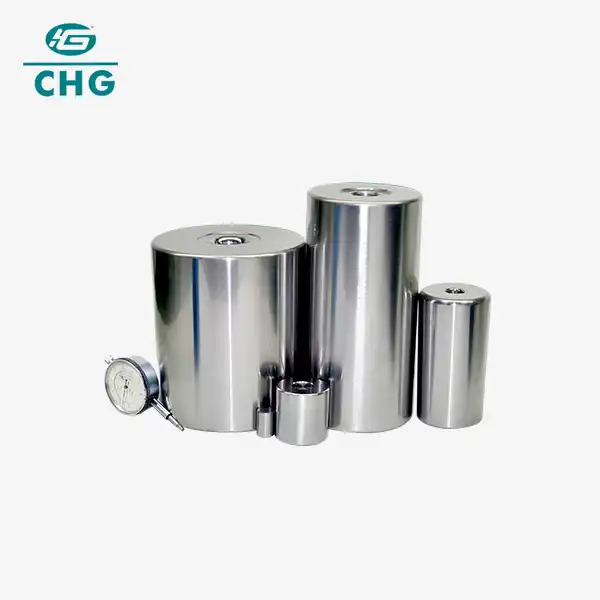 VIEW MORESpherical Rollers
VIEW MORESpherical Rollers -
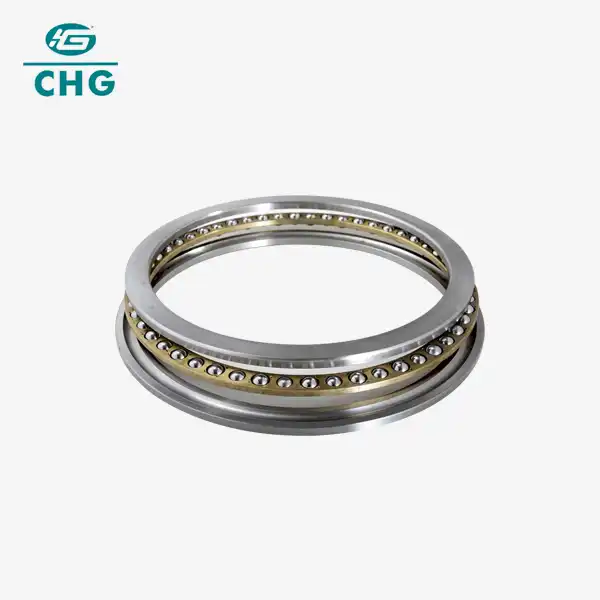 VIEW MOREThrust Ball Bearing
VIEW MOREThrust Ball Bearing

